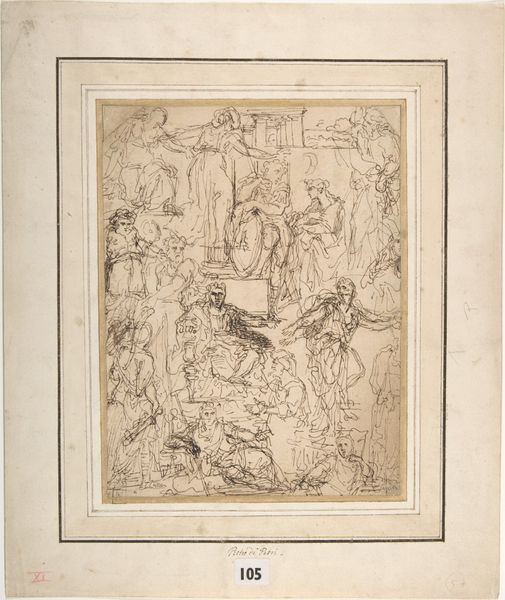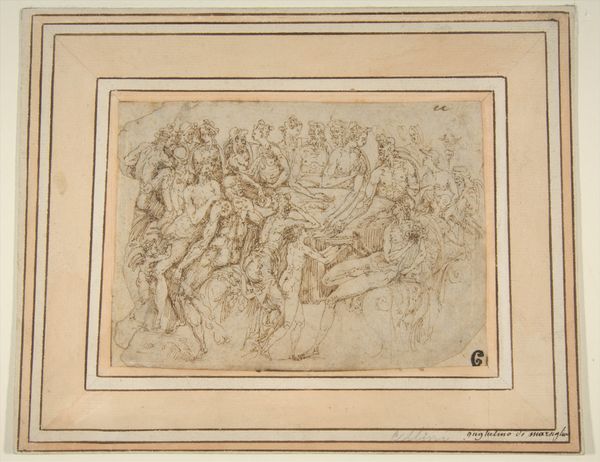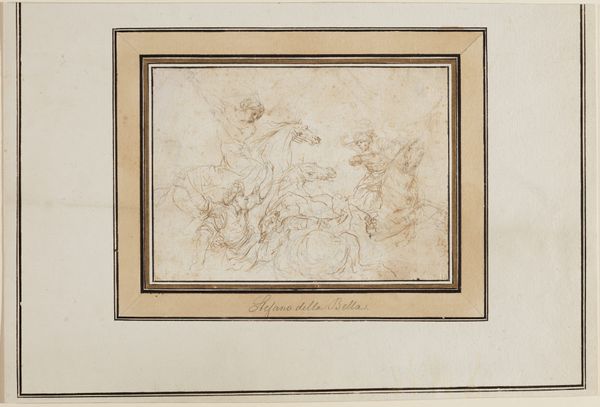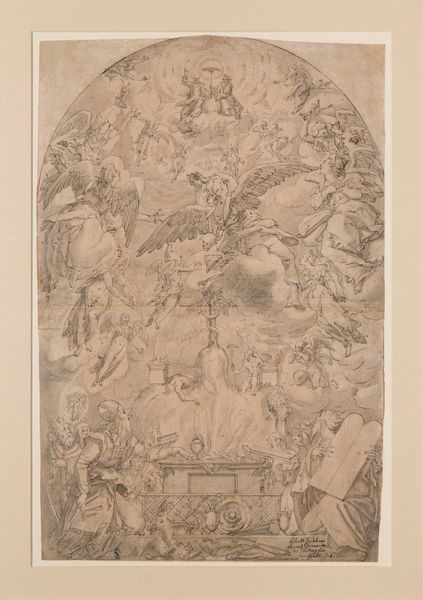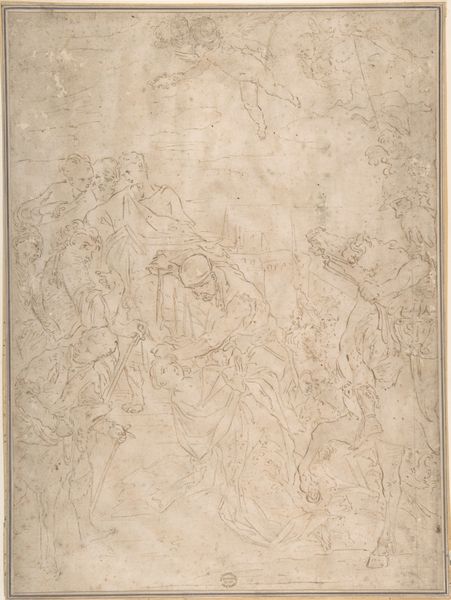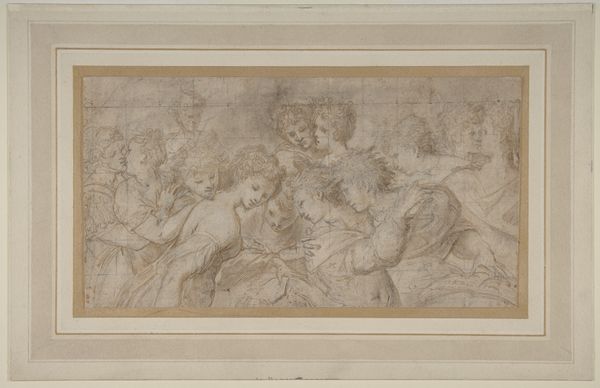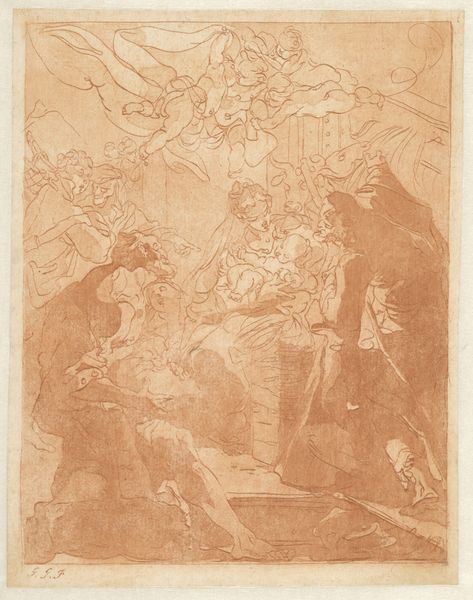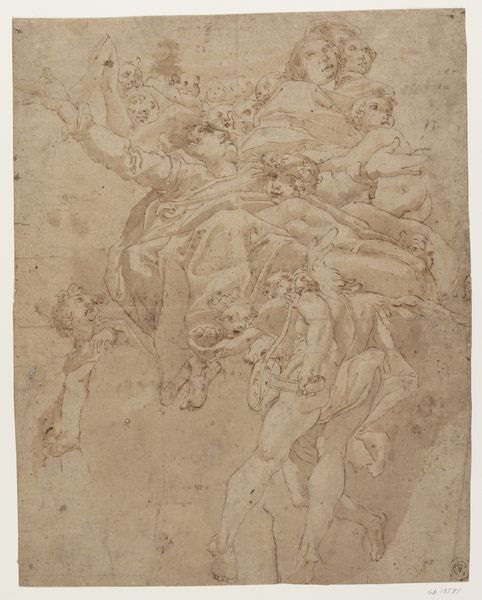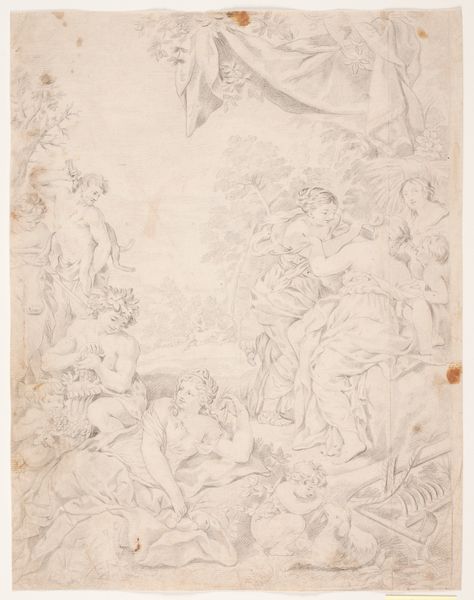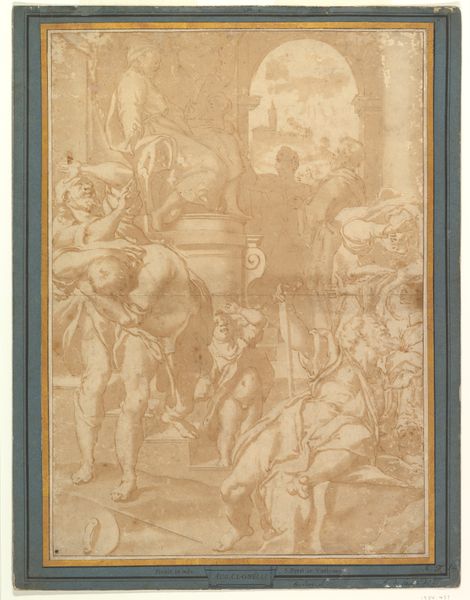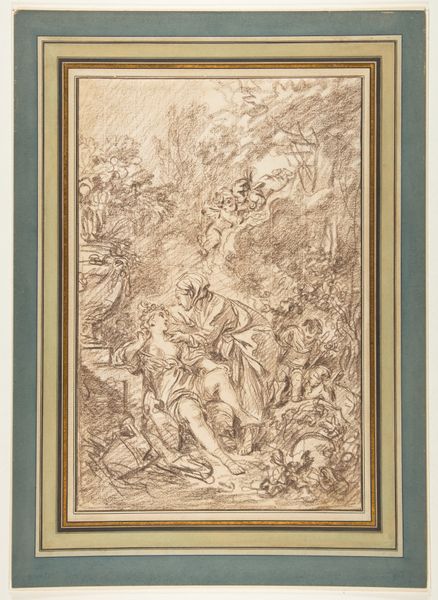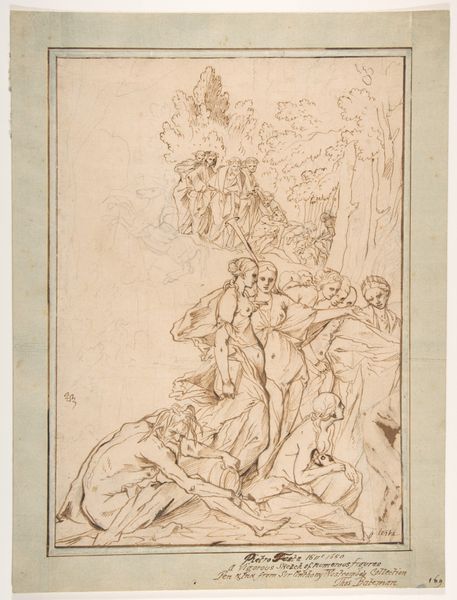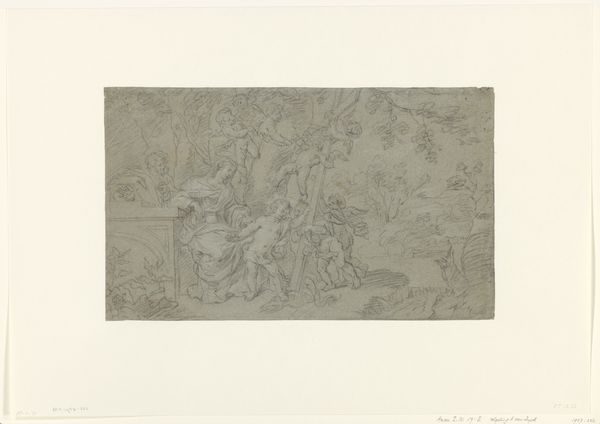
drawing, print, etching
#
drawing
#
baroque
# print
#
etching
#
etching
#
figuration
#
france
#
genre-painting
#
nude
Dimensions: 11 5/8 x 8 1/4 in. (29.5 x 21 cm)
Copyright: Public Domain
Editor: So, we're looking at "Satyr and Nymphs Dancing" by Raymond de La Fage, made sometime between 1650 and 1684. It's an etching, and it's got this frantic energy, like a bacchanal. What's your take on it? Curator: It strikes me as an illustration of power dynamics within mythology and its reception in Baroque France. La Fage presents us with a seemingly celebratory scene, but when viewed through a critical lens, we can question the roles assigned to these figures, particularly the nymphs. How does the male gaze shape their representation and their perceived agency within the narrative? Editor: So, it's not just a party, it's a commentary on power? I hadn't thought of that. Curator: Exactly. Think about the historical context: the French court, the rise of absolutism, the way art was used to project power and control. How do those societal structures influence the artist's choices and the way audiences would have interpreted this image? Is it possible that this depiction reinforces existing gender roles and societal expectations? Editor: That's a really interesting point. The women are clustered together, almost passive, while the satyr is much more… dynamic. I suppose I’d viewed it as classical and fun, never really considered the more insidious power dynamics. Curator: It is easy to be drawn in by the art, however, remember to delve deeper. Think about the term 'nymph' itself and how it has historically been used to sexualize and objectify women. Are they truly liberated and joyful, or are they figures confined by societal expectations and male desires? How would feminist theory shed light on this interpretation? Editor: It totally changes the way I see it! The wild dancing becomes less celebratory and more…fraught. It does seem pretty one-sided, like it romanticizes this very unequal situation. Thanks for making me consider this piece on a deeper level! Curator: Absolutely. And by questioning these representations, we challenge the normalization of power imbalances in art and society. We see more than just an old party and begin seeing reflections of systems that perpetuate those inequities today.
Comments
No comments
Be the first to comment and join the conversation on the ultimate creative platform.
